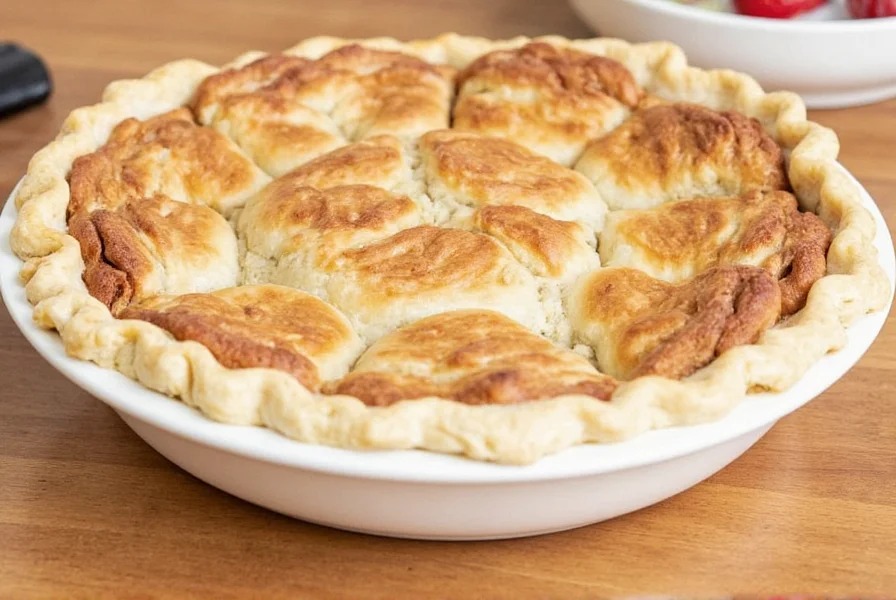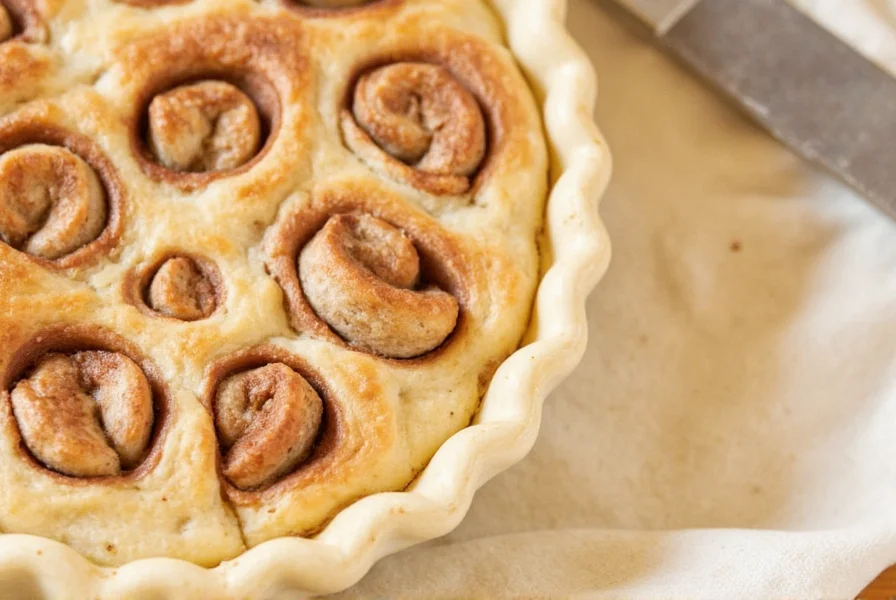Creating cinnamon rolls with pie crust transforms a time-intensive baking project into an accessible treat anyone can make. This innovative approach leverages the flakiness of quality pie crust while incorporating the sweet cinnamon filling that makes these pastries so popular. Whether you're a beginner baker or an experienced chef looking for time-saving techniques, this method delivers impressive results with minimal effort.
Why Choose Pie Crust for Cinnamon Rolls?
Using pre-made pie crust for cinnamon rolls offers several distinct advantages over traditional yeast-based recipes. The most significant benefit is time savings—no waiting for dough to rise means you can go from pantry to oven in under 30 minutes. Pie crust also provides consistent texture without the risk of over-proofing that can happen with yeast doughs. The flaky layers created by the pie crust's buttery layers produce a uniquely tender crumb that differs from but complements the classic cinnamon roll experience.
Essential Ingredients for Cinnamon Roll Pie Crust
The beauty of this recipe lies in its simplicity. You'll need just a few pantry staples alongside the pie crust:
| Ingredient | Quantity | Notes |
|---|---|---|
| Refrigerated pie crust | 1 package (2 crusts) | Keep chilled until ready to use |
| Unsalted butter | ½ cup (1 stick) | Softened to room temperature |
| Granulated sugar | ⅔ cup | Plus 2 tbsp for topping |
| Brown sugar | ⅓ cup, packed | Light or dark works |
| Ground cinnamon | 2 tbsp | Freshly ground preferred |
| Vanilla extract | 1 tsp | For filling |
| Milk or cream | 2 tbsp | For brushing |
Step-by-Step Preparation Guide
Follow these straightforward steps to create perfect cinnamon roll pie crust treats:
- Prepare the crust: Remove pie crusts from refrigerator and let sit at room temperature for 5-7 minutes until pliable but still cold.
- Create the filling: In a medium bowl, combine softened butter, granulated sugar, brown sugar, cinnamon, and vanilla until smooth and well incorporated.
- Assemble the rolls: Unroll one pie crust onto a lightly floured surface. Spread half the filling mixture evenly over the crust, leaving a ½-inch border around the edges.
- Roll and slice: Starting from the long edge, tightly roll the crust into a log. Slice into 1-inch pieces using a sharp knife or dental floss for clean cuts.
- Bake: Place rolls cut-side down in a greased baking dish, cover with plastic wrap, and refrigerate for 15 minutes while preheating oven to 375°F (190°C).
- Final preparation: Brush rolls with milk or cream and sprinkle with remaining 2 tablespoons of sugar before baking for 20-25 minutes until golden brown.

Perfect Baking Conditions for Cinnamon Roll Pie Crust
Temperature control proves critical when baking cinnamon rolls from pie crust. Unlike traditional yeast rolls that require lower temperatures, pie crust-based rolls need higher heat to properly set the crust while melting the filling. The ideal baking temperature sits between 375-400°F (190-205°C), with most ovens performing best at 375°F. Bake for 20-25 minutes—any less and the crust won't fully cook, any more and the edges may burn while the center remains doughy.
For optimal results, place the baking dish in the center rack of your oven. Rotate the pan halfway through baking to ensure even browning. The rolls are done when they reach an internal temperature of 190°F (88°C) and the filling bubbles gently at the edges.
Troubleshooting Common Issues
Even with this simplified method, you might encounter a few challenges. Here's how to address them:
- Filling leaking out: This typically happens when the rolls aren't sealed properly or the filling contains too much moisture. Ensure you leave a small border when spreading filling and avoid overfilling.
- Doughy centers: Your oven temperature might be too low or the rolls could be too tightly packed. Space rolls at least ½ inch apart and verify your oven temperature with an independent thermometer.
- Burnt edges: Lower the oven temperature by 25°F and tent the pan with aluminum foil during the last 5-10 minutes of baking.
- Flat rolls: If your rolls aren't maintaining their shape, the filling might be too runny or the dough too warm. Chill the assembled rolls for 15 minutes before baking.
Delicious Variations to Try
Once you've mastered the basic cinnamon roll pie crust recipe, experiment with these creative variations:
- Cheesecake swirl: Mix 4 ounces of softened cream cheese with the filling ingredients for a tangy twist.
- Apple cinnamon: Add ½ cup finely diced apples (tossed with 1 tsp lemon juice) to the filling layer.
- Chocolate drizzle: After baking, drizzle with melted chocolate or include chocolate chips in the filling.
- Nutty crunch: Sprinkle ¼ cup chopped pecans or walnuts between the filling and crust before rolling.
Storage and Serving Recommendations
While cinnamon roll pie crust treats taste best fresh from the oven, you can store leftovers properly for continued enjoyment. Keep cooled rolls in an airtight container at room temperature for up to 2 days. For longer storage, freeze individual rolls on a baking sheet, then transfer to freezer bags for up to 3 months. Reheat frozen rolls by placing directly in a 325°F oven for 10-15 minutes.
Serve these pie crust cinnamon rolls warm with a simple glaze made from powdered sugar, milk, and vanilla, or enjoy them plain to appreciate the delicate balance of buttery crust and spiced filling. They pair beautifully with coffee, tea, or cold milk for breakfast or as an afternoon treat.
Frequently Asked Questions
Can I use homemade pie crust instead of refrigerated?
Yes, homemade pie crust works well for cinnamon rolls, but ensure it's properly chilled before rolling. The higher butter content in homemade crust may require slightly shorter baking time to prevent excessive browning.
How do I prevent the pie crust from shrinking during baking?
Chill the assembled rolls for at least 15 minutes before baking to relax the gluten. Avoid stretching the crust when rolling, and don't pull the dough too tightly when forming the log.
Can I prepare cinnamon roll pie crust ahead of time?
Absolutely. Assemble the rolls, place them in the baking dish, cover tightly, and refrigerate overnight. When ready to bake, remove from refrigerator while preheating the oven, then bake as directed—adding 3-5 minutes to the baking time if needed.
Why are my cinnamon roll pie crusts too dense?
Density usually results from over-handling the dough or using filling that's too cold. Work quickly with the pie crust while it's still cold but pliable, and ensure your filling ingredients are at room temperature for even distribution.











 浙公网安备
33010002000092号
浙公网安备
33010002000092号 浙B2-20120091-4
浙B2-20120091-4